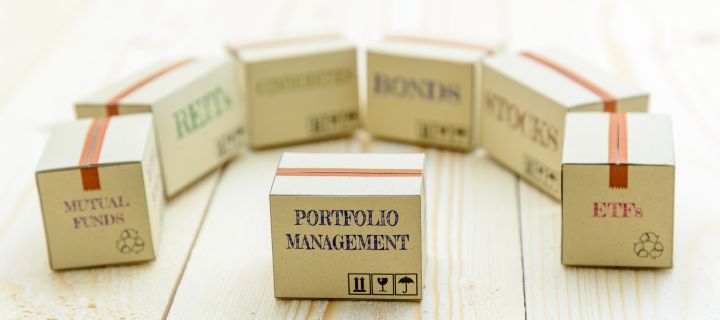
There are many investing strategies, and it’s essential to match your approach to your objectives and level of risk. The following guide provides some helpful insights into building an investment portfolio.
Investing is a long-term strategy
Our first and most important point about building an investment portfolio is the fact that it’s a long-term strategy. An ideal length of time to generate viable returns would be around five years. As an investor, your investments will naturally go up and down, so don’t expect any quick wins. A sensible investing strategy takes market trends into account.
The stock market can be affected by various elements. Industry trends, company issues, socio-political influences, GDP, inflation and interest rates, and other economic factors can cause market shocks.
Investments are weighted in terms of risk; therefore, it’s essential to consider your risk appetite. As a simplified example, some investment providers might have Cautious, Balanced, Moderately Adventurous or Adventurous portfolios. Each portfolio will have a different proportion of UK shares, overseas shares and other types of bonds. You would then need to compare potential returns against your chosen level of risk.
Diversify your investment portfolio
A diverse investment portfolio consists of investments spread across a mix of different asset classes, such as bonds and shares. This provides a balanced approach to your investing strategy, helping to offset the impact of market volatility.
What are asset classes?
An asset class is a group of investments with similar characteristics, making them subject to the same regulations and laws. Asset classes mainly cover the following three areas:
- Shares – this is a type of financial equity that provides investors with part-ownership of a company listed on a country’s stock exchange. Stocks are slightly different to shares but fall within the same asset class. Technically, you would invest in a share of the company’s stock, while shares are an investment in the company itself.
- Bonds – this is a fixed income investment, representing a loan made by an investor to a borrower, such as the government or a corporate body.
- Cash and cash equivalents – known as securities, this type of investment can be quickly converted by a company with liquidity into cash.
There are other investment assets, but we have kept things simple for this article. Once you understand the different types of assets, you need to think strategically.
Strategic investment planning
Before you commit to any investment strategy, think about your financial objectives. What do you want to achieve, and by when? You might be planning for your retirement or preparing for other milestones or big life events. Having solid goals will help you choose the right level of risk for your situation. It will also help you sharpen your investment strategy.
Choosing your preferred level of risk is a personal matter. You should never feel pushed into committing to any portfolio. You will need to weigh up market volatility and long-term returns on your investment.
If you are a long way off from retirement, for example, you might feel able to choose a more Adventurous portfolio. However, if you have a young family to support, you might choose a more balanced approach. Likewise, if you are close to retirement, you might prefer a Cautious portfolio.
You will then need to choose a suitable mix of bonds and shares. There are pros and cons for both, and it’s essential to get the right ratio, so you can achieve your investing goals.
Make sure your portfolio is diversified to spread your level of risk across different markets and a mix of asset classes. Lastly, shares and bonds from various industries, companies, and countries should be compared to secure more stable investment returns.
Wealth Management in Nottingham and Lincoln
Our financial planning team can help you manage your wealth, so your money works harder for you. Based in Nottingham and Lincoln, we offer two portfolio options with 10 risk levels, allowing you to tailor your investment strategy to suit your objectives. Learn more…
Our Core Portfolio is simple, low cost and focused on good returns. Our Good Practice Portfolio uses responsible, ESG investing criteria. Companies are measured in terms of environmental sustainability, social responsibility and good business governance.
If you would like to build an investment portfolio, get in touch to speak with our financial planners.
Sources:
https://www.hl.co.uk/learn/how-to-build-a-portfolio
https://www.investopedia.com/terms/a/assetclasses.asp

